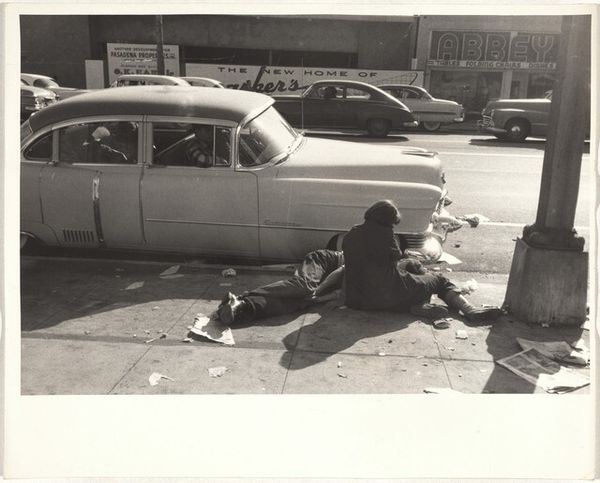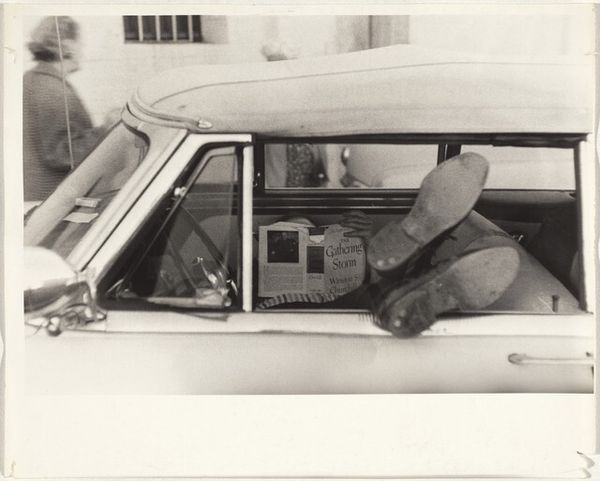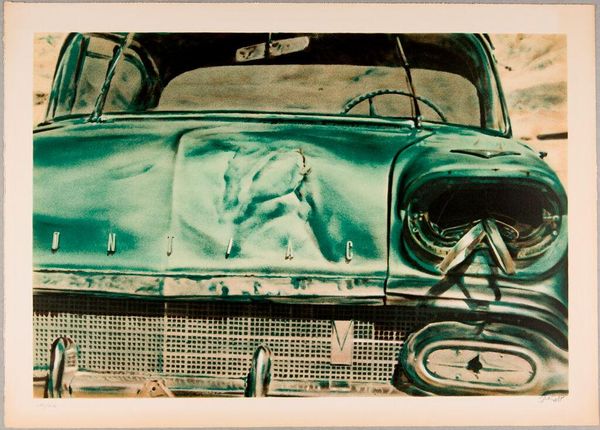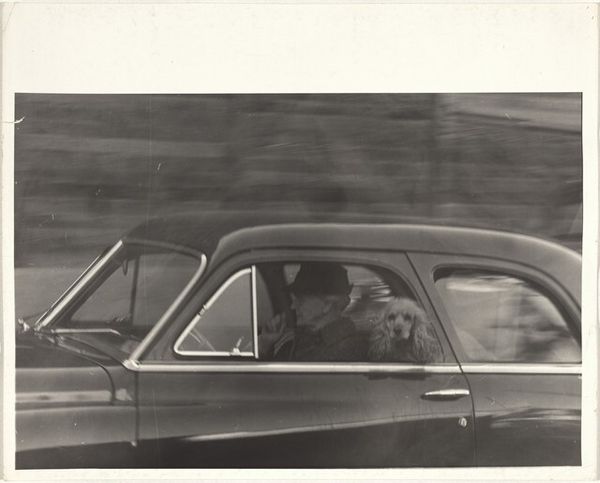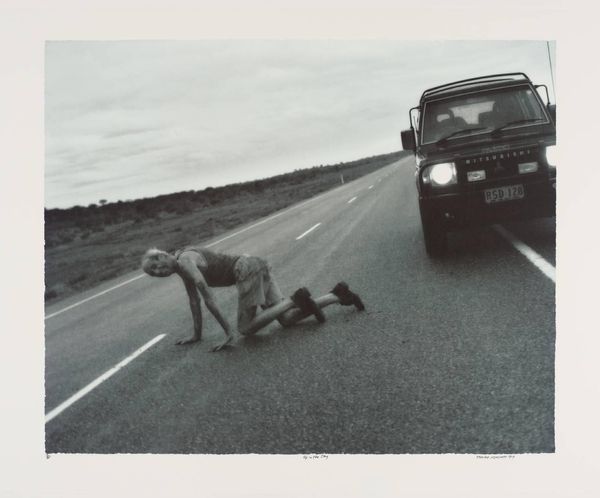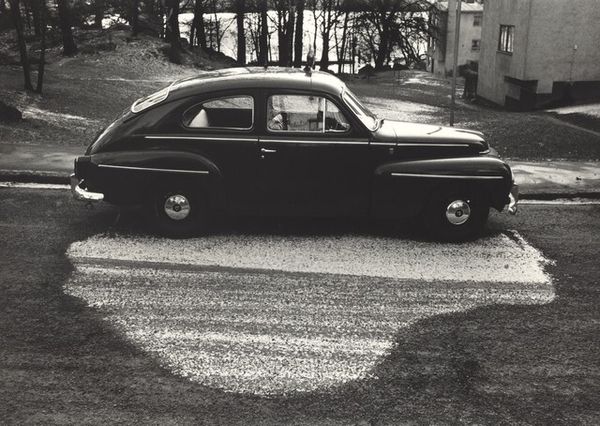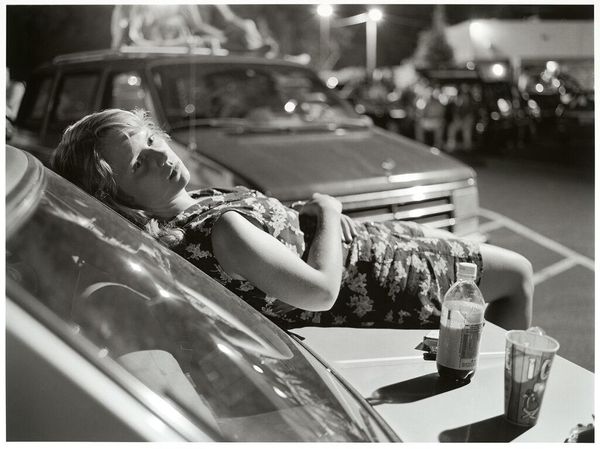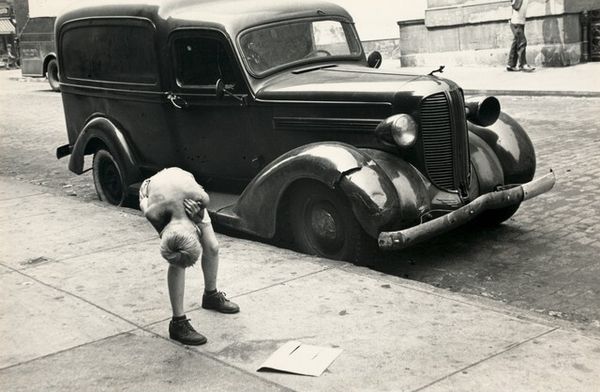
photography
#
portrait
#
contemporary
#
street-photography
#
photography
#
cityscape
Dimensions: image: 24.1 x 36 cm (9 1/2 x 14 3/16 in.) sheet: 35.1 x 44.1 cm (13 13/16 x 17 3/8 in.)
Copyright: National Gallery of Art: CC0 1.0
Curator: Here we have Helen Levitt's "New York," a photograph dating possibly from the 1980s. The color palette is muted yet rich, dominated by the green of an enormous car, with the tires framing a child crouching down, hand resting on the undercarriage. Editor: The mood is striking; there is an underlying tension or discomfort about the work that I can't shake. The girl's hunched posture almost conveys a feeling of being trapped, juxtaposed against the rigid mass of the parked car. Curator: Levitt often captured candid street scenes, elevating the everyday. What stands out to me is the geometric contrast between the car’s harsh lines and the softness of the girl's form, emphasizing how the photographer captured a moment between two very different shapes that together create an interesting pictorial dynamic. Editor: It's difficult to ignore the socio-economic context. Considering Levitt’s career, one may understand how race and gender create the background within the images as the image underscores childhood and its discontents. Is it a safe situation? What does it mean for this young body to occupy that polluted urban space? Curator: What's fascinating about this image is its deceptive simplicity. The photograph's focus, on line, form, color and texture reveals the photographer's sharp attention to her artistic vision and street photography style. Editor: I view Levitt’s image through the perspective of the child’s experience of urban spaces, looking at the possible connections between lived lives, racial divides, and economic access in metropolitan communities. What stories does Levitt make visible, and who does she choose as the focus of the photo's frame? Curator: Indeed. The beauty of street photography is this intersection of the deliberate artistic arrangement with the found reality of the streets. And in the picture that Helen Levitt presents to us today, these ideas work well together in a photograph that leaves its audience feeling intrigued. Editor: It is a layered, thought-provoking work. Levitt challenges us to reflect on the unnoticed dramas of urban life and their possible social implications.
Comments
No comments
Be the first to comment and join the conversation on the ultimate creative platform.

